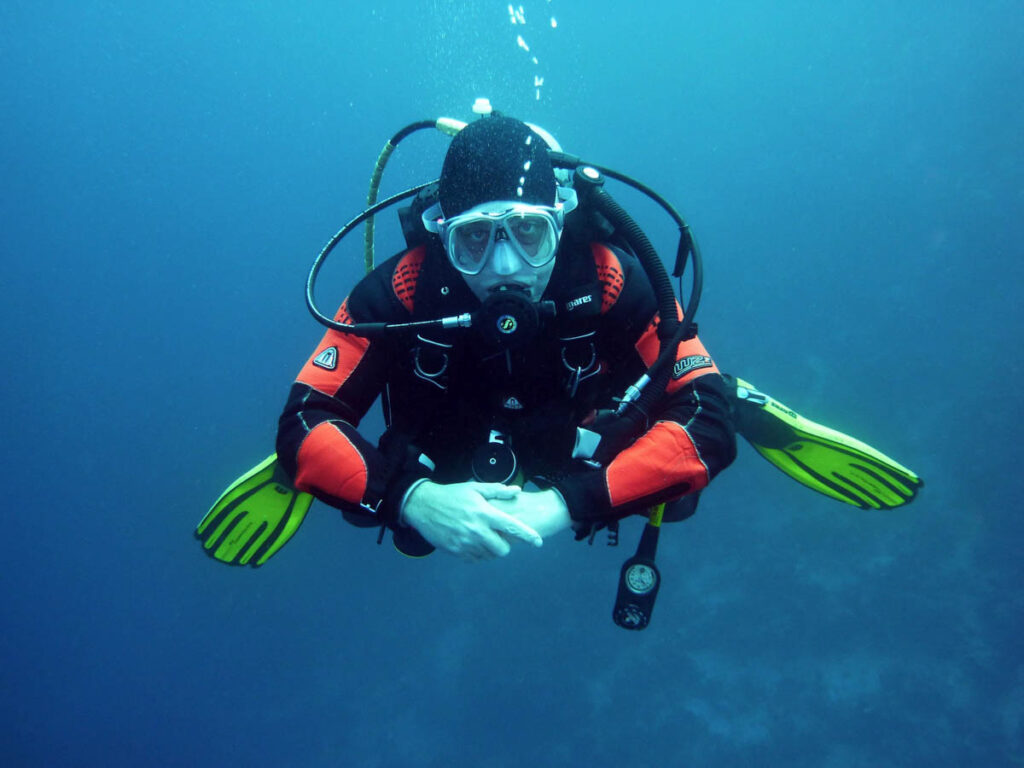In the dynamic and often challenging environment of scuba diving, clear communication and effective skill development are essential components of safe and successful training. One invaluable tool that aids both instructors and students in achieving these goals is the use of instructional cue cards, commonly known as wet-notes. These waterproof cards, designed for underwater use, help ensure that key instructional points, skill steps, and safety procedures are always accessible during dive training. The benefits of using wet-notes during scuba training extend far beyond just improving communication; they can also prevent serious risks associated with incomplete skill development and the potential liability that instructors face in the event of an accident.
Improved Underwater Communication
Underwater communication presents a unique challenge for scuba instructors. Divers are often limited to hand signals, which can be difficult for new divers to interpret accurately, especially in situations where clear, precise instructions are crucial. Wet-notes serve as an effective communication tool by allowing instructors to write down key instructions or cues that the student can refer to underwater. This enables divers to focus on skill execution rather than struggling to remember verbal instructions or hand signals.
For example, when teaching complex skills such as buoyancy control, mask clearing, or emergency ascent procedures, instructors can write down key steps or reminders on agency wet-notes that the student can review while submerged. This not only reinforces verbal instructions but also ensures that students have a visual reference to guide them through the skill. The ability to read or view a note underwater greatly enhances the student’s confidence and ability to perform tasks correctly, especially under pressure.
Ensuring Skill Requirements Are Met
One of the primary functions of instructor cue cards and wet-notes is to ensure that all required skills are demonstrated and properly executed by students. Scuba training agencies, such as PADI, SSI, or ISC, have clearly defined performance objectives for each level of certification, from introductory programs like Try Dive to more advanced qualifications such as Open Water Diver or Rescue Diver. These performance objectives outline specific skills that must be performed to a set standard, and it is the instructor’s responsibility to ensure that students meet these requirements.
Wet-notes help instructors stay organized and focused by providing a written checklist of the required skills and their specific performance standards. This reduces the risk of overlooking essential skills during training, ensuring that each student has met the necessary criteria before progressing to the next level. By using wet-notes to guide skill development, instructors can verify that students demonstrate proficiency in each required task, from buoyancy control to emergency procedures.
For example, if an instructor is teaching an Open Water Diver student to clear their mask underwater, the wet-notes can include a clear outline of the skill. This serves as a reminder for both the instructor and the student to ensure that all skills are covered, minimizing the chance of missed steps or incomplete training.
Reducing the Risk of Missed Skill Development
The consequences of missing a critical skill in scuba training can be severe. Incomplete or poorly executed skills can lead to dangerous situations, such as air sharing during an emergency, loss of buoyancy control, or panicking underwater. Instructors are legally and ethically responsible for ensuring that students complete all necessary skills to a competent level. Failing to address a student’s incomplete skill development may result in inadequate preparation, putting both the student and others at risk during future dives.
Wet-notes act as a safety net, helping instructors track and verify that all required skills are completed. By providing a visual checklist, wet-notes reduce the likelihood of overlooking a step or failing to correct an error. This process not only improves student safety but also supports the instructor in fulfilling their duty of care.
Liability and Legal Protection
Instructors are not only responsible for the safety and success of their students but are also liable for any accidents or injuries that occur during training. If an accident occurs and the instructor cannot demonstrate that they followed the correct procedures and ensured that students completed all the required skills, they may be exposed to legal and financial risks. This is particularly true in cases where a student’s incomplete skill development could be identified as a contributing factor to the incident.
In the event of an accident, wet-notes serve as an important record of the instructor’s actions and can provide essential evidence that the instructor followed established training protocols. These written cues and checklists show that the instructor took appropriate steps to ensure skill completion and provided necessary guidance during the training process. This documentation can help defend the instructor against claims of negligence or failure to adequately train the student.
Without wet-notes or similar documentation, an instructor may struggle to prove that they took the proper steps to ensure student competence. In a legal setting, the absence of such evidence could lead to the instructor being found at fault for the incident, potentially resulting in costly legal fees, loss of certification, or even criminal charges in extreme cases.
Conclusion
The use of instructor cue cards and wet-notes in scuba diving training offers numerous benefits, from improving underwater communication to ensuring that all required skills are met and documented. By providing a clear reference for skill steps and safety procedures, wet-notes help instructors guide students more effectively and reduce the risk of incomplete or poorly executed training. Additionally, wet-notes provide an important layer of protection for instructors, helping to reduce liability by offering a record of training activities and demonstrating that all necessary skills were addressed.
In a profession where safety is paramount, the use of wet-notes is not just a helpful tool—it is a responsible practice that enhances training quality, student safety, and instructor accountability. Given the legal and safety implications of incomplete training, there is little doubt that using wet-notes should be considered a standard and essential part of any scuba instructor’s toolkit.
Instructors – are you using your wet notes when training entry level students?







